When an Ensign All Distance camera from 1927 came up on the local auction site, a wave of nostalgia saw me thinking about revisiting my first, very basic, box camera. Having owned several excellent Ensign folding cameras over the years it seemed a logical progression, if kind of in reverse, but to a better spec than my first box would have been.
As it turned out, though, instead of the intended “5 frames with…” quickie I had in mind, it took a bit longer and lead me to possibly discover the story of a bit of a commercial boo boo back in 1927.
Background.
The Ensign All Distance was a name used for several models made by the Houghton Butcher Manufacturing Co Ltd, aka Ensign. The company went through several re-groupings, takeovers and re-namings during its existence and was responsible for some of the best cameras to come out of the British photographic industry over more than half a century. The original Houghton name eventually became Ross Ensign in its final incarnation before ceasing trading.
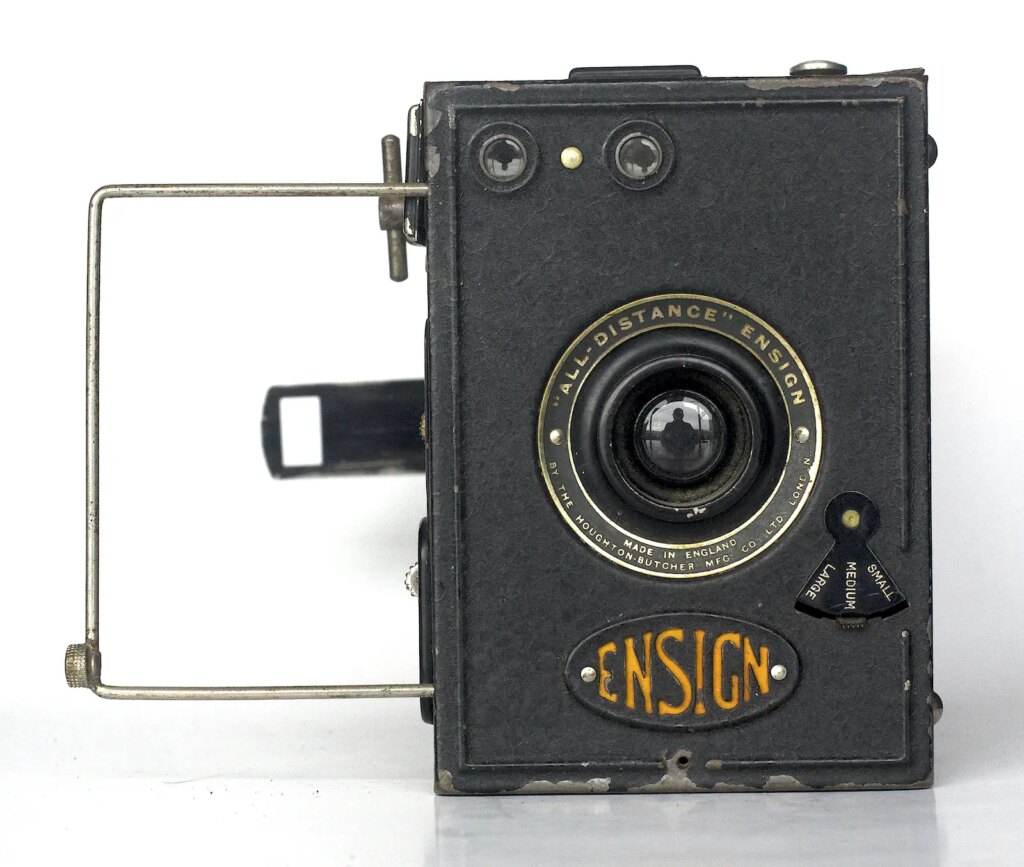
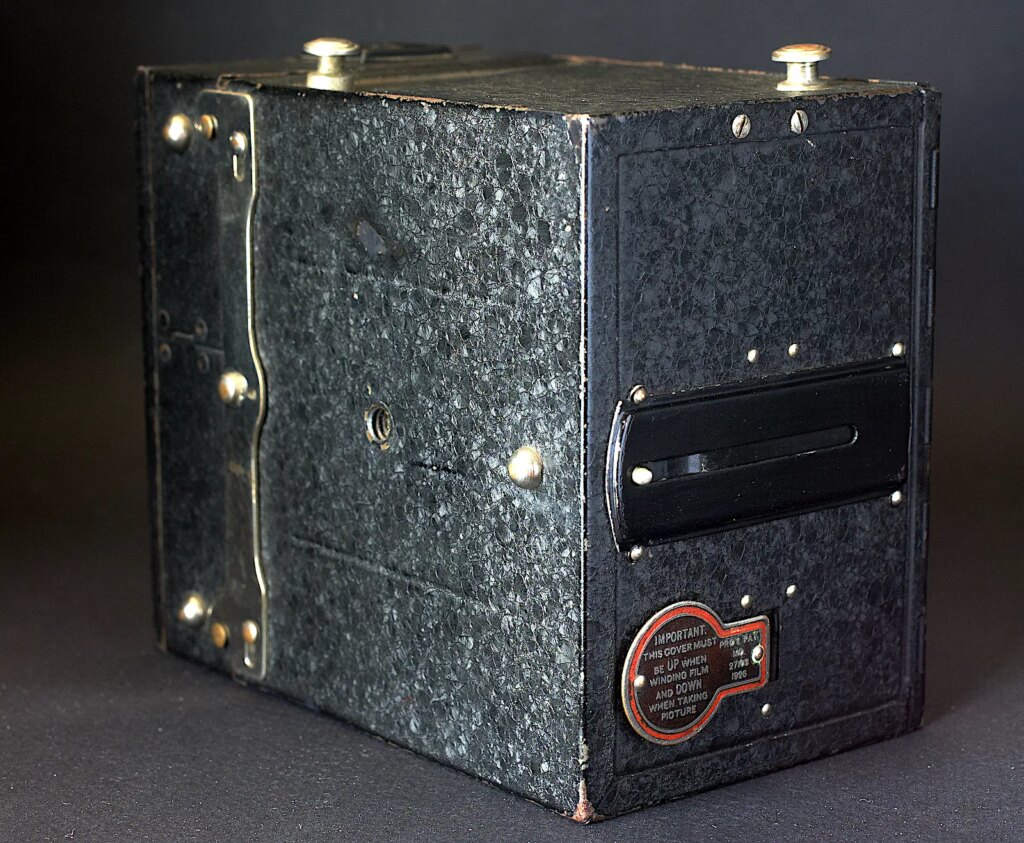
The camera.
Compared to many basic box cameras of the time, this one is more like a “real” camera, feeling solidly made and heavy in the hand. The all metal body is made from extrusions as well as pressed metal, with steel and brass components, and with an attractive, crackle finish. In the hand it feels solid with a slightly fiddly aperture adjustment but a nice, smooth shutter release action, the shutter releasing a fraction of a second after reaching the end of its travel. It feels a little like the early-digital shutter lag of my Olympus C2000.
It was not a cheap camera, costing 25/- (£1/5/-, £1.25p) in 1930, according to the Ensign catalogue in Pacific Rim Camera’s excellent reference library on their web site. Coloured versions with matching cases were also offered at even higher cost. This price equates to over £60 today, so not an impulse buy. Even the simplest box camera Ensign offered at the time, which cost only 8/6d, £20 today, was close to an average day’s wages at the time.
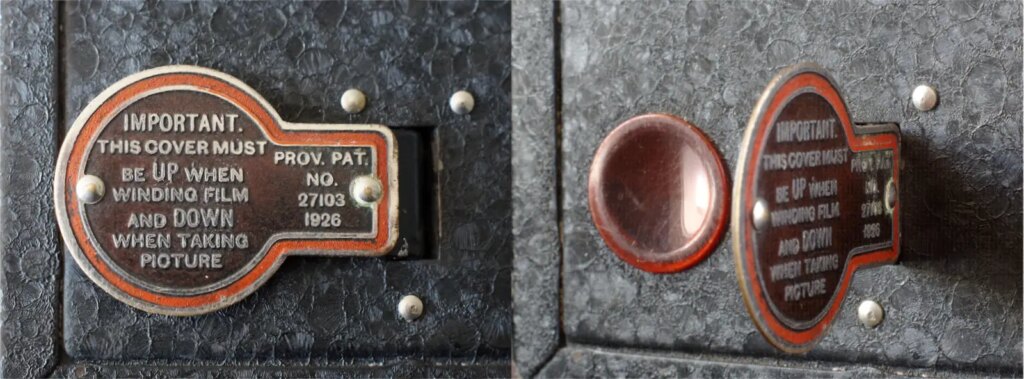
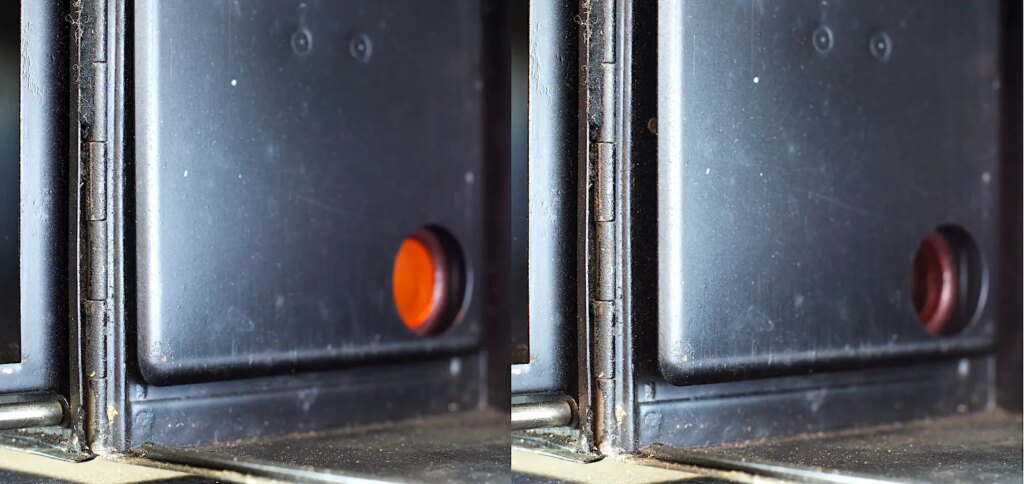
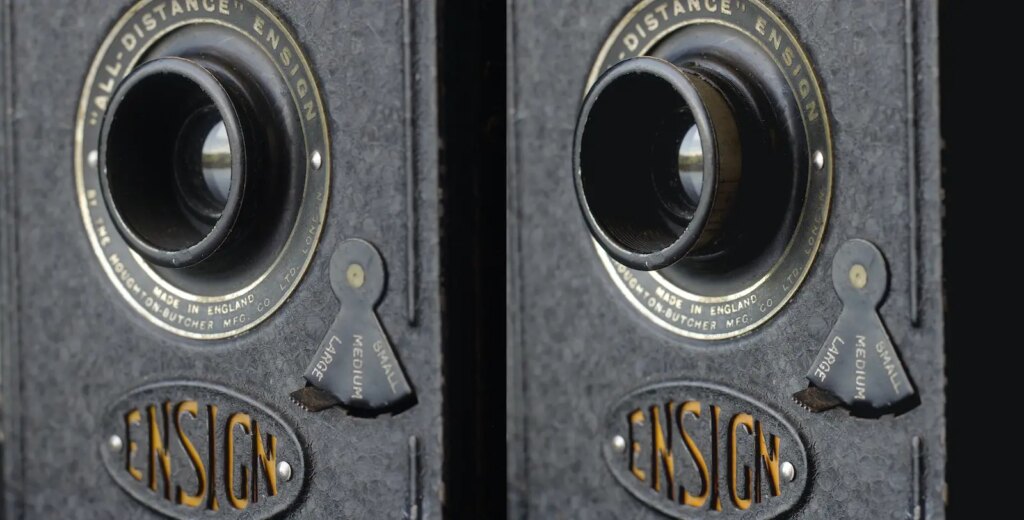
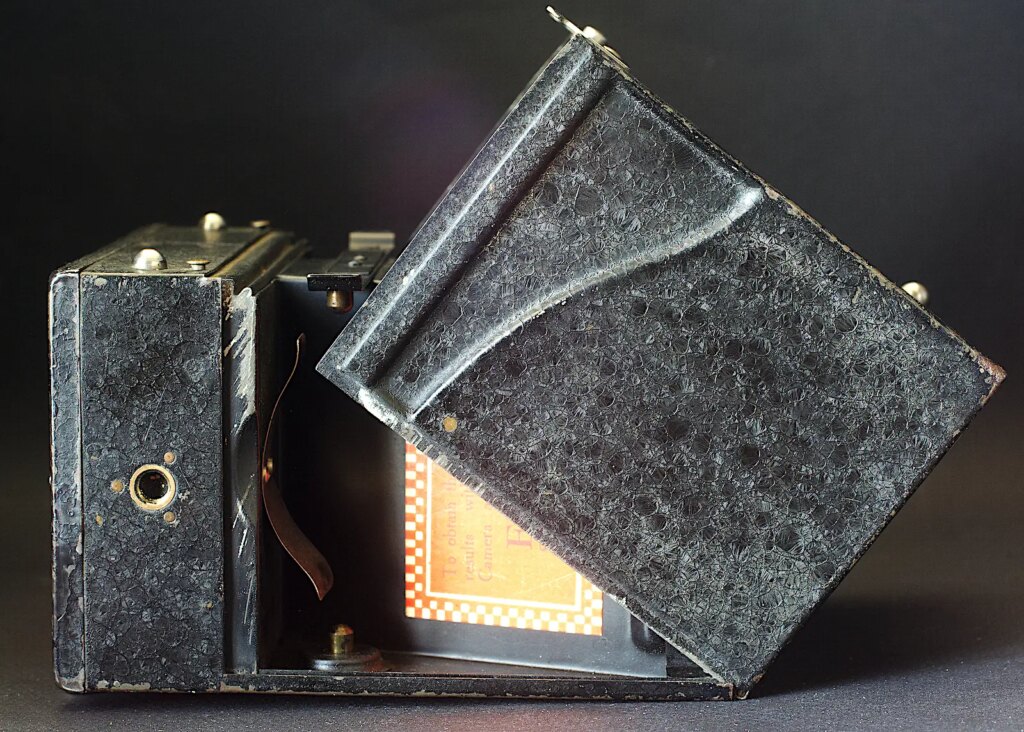
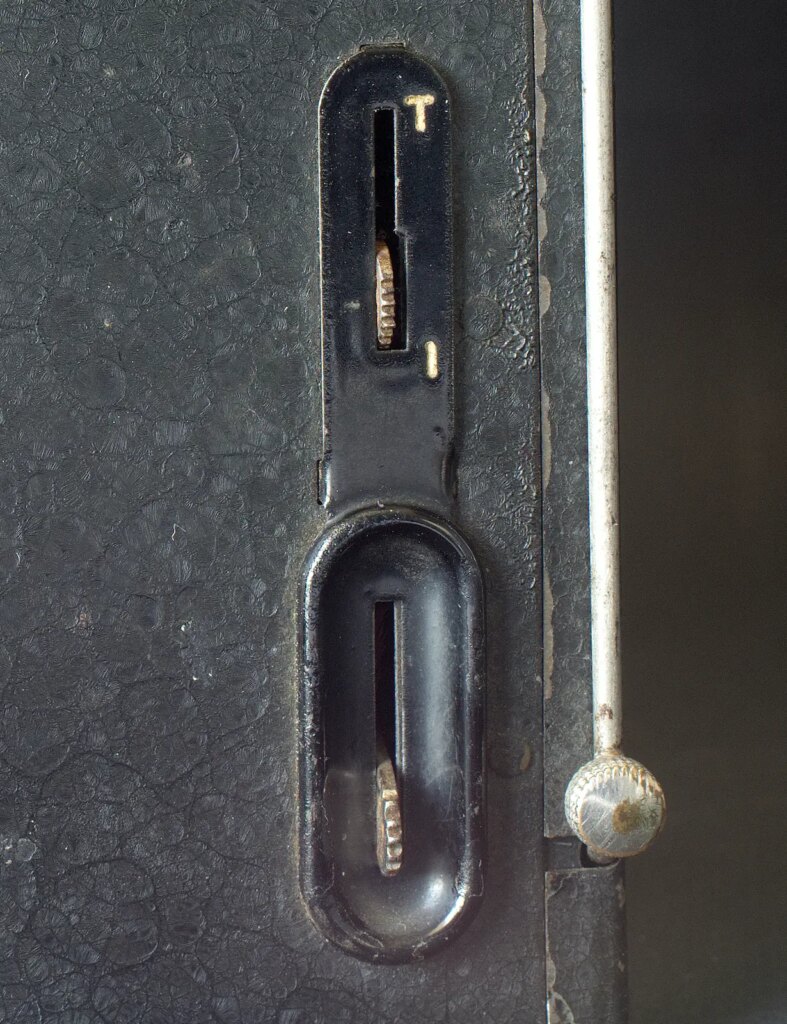
The frame finder, the novel winding arrangement, which relaxes the pressure plate when the peep hole cover is opened for winding on, and the two position focusing lens were quite advanced features for the time. It has a hinged back for access to load film, that needed several felt light traps, uncommon on the most basic cameras, rather than the more common, slide together two box design. These features must have added to the production costs of this relatively expensive camera. The optical finders are tiny but bright. With a simple meniscus lens, focus is variable to say the least, but mostly adequate for album contact prints most users would want. The lens is mounted in a sliding tube allowing it to be moved forward to the “under 10 feet” position, unlike the slide-in close up lens used by many other cameras of the time.
On arrival, the camera was in dire need of attention to put right 95 years of inevitable wear and tear.
The complete front panel came away in the hand when an attempt was made to pull the lens out to the “under 10 feet” position. A small screw from my spares box fixed it securely in position.
Small distortions to the body were straightened and general chips and scuffs were touched up a little.
The shutter release, which works alternately in each direction, occasionally wouldn’t release the shutter on the down stroke. A frayed light trap, which had bunched up at one end impeding travel turned out to be the culprit and was replaced.
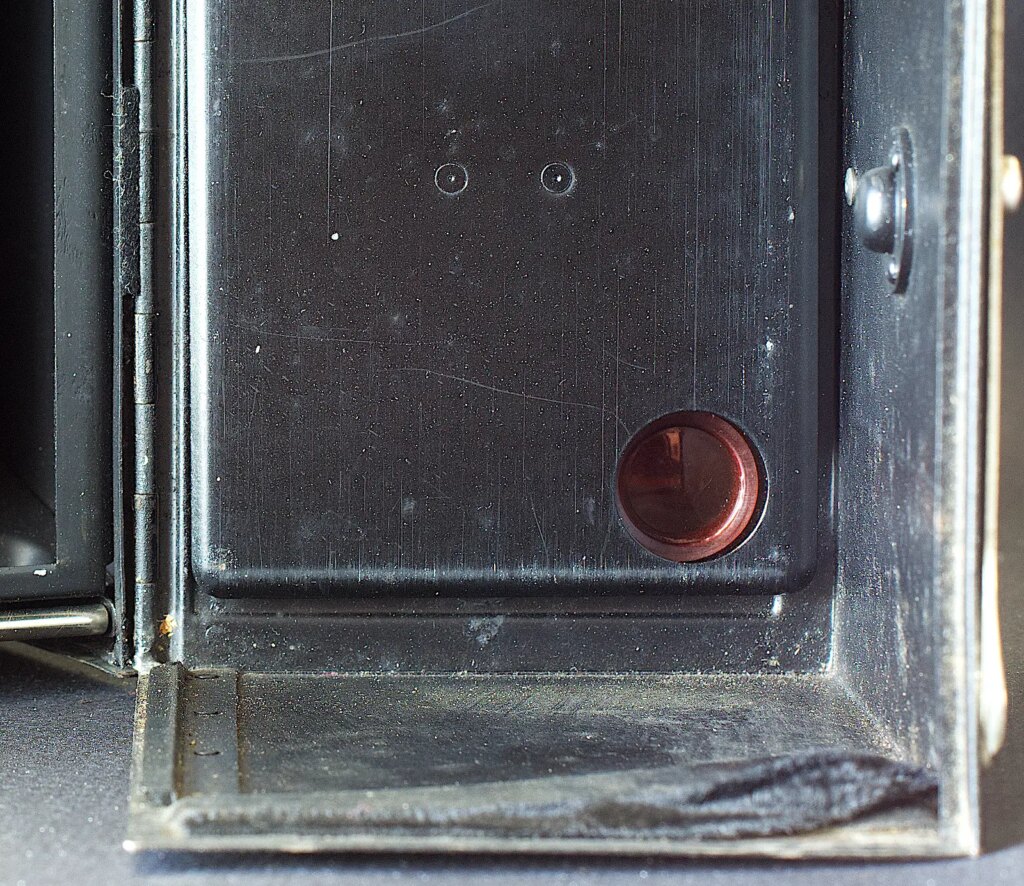
Various other light traps were damaged or non-existent. I replaced the obvious ones but finding them all proved less straightforward.
Practical aspects.
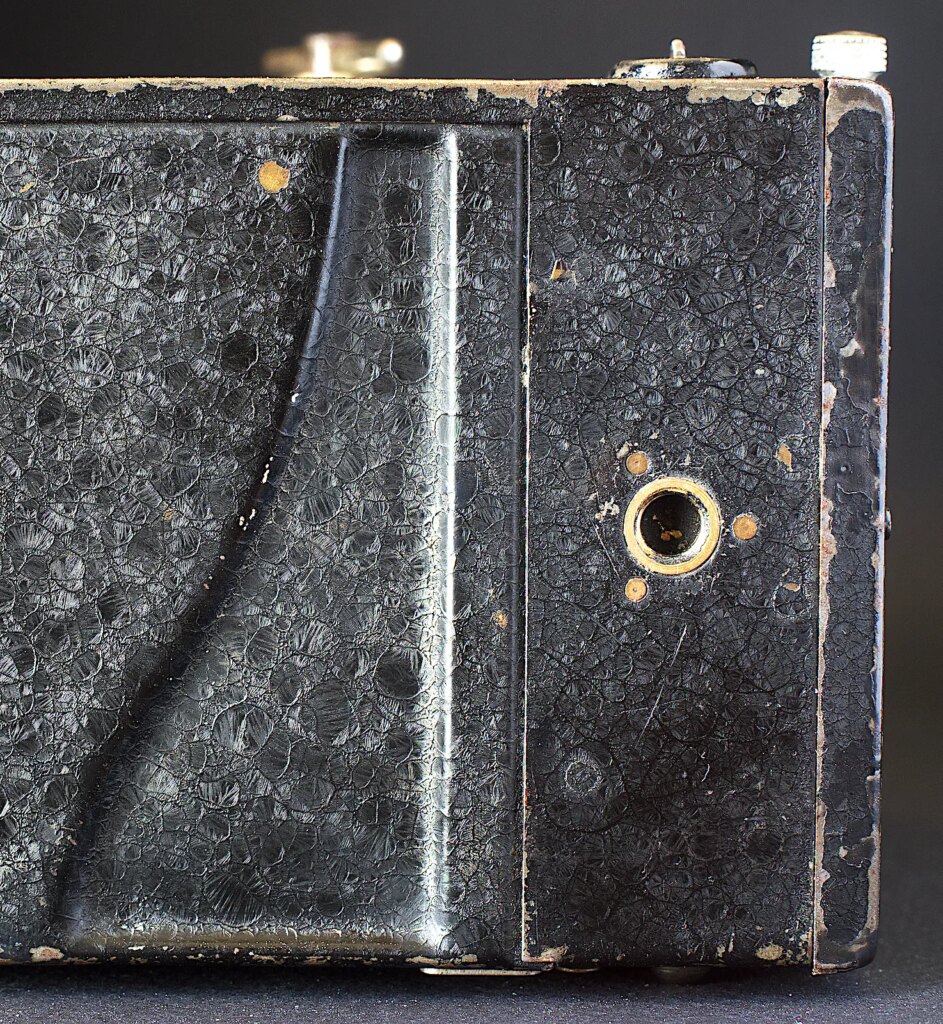
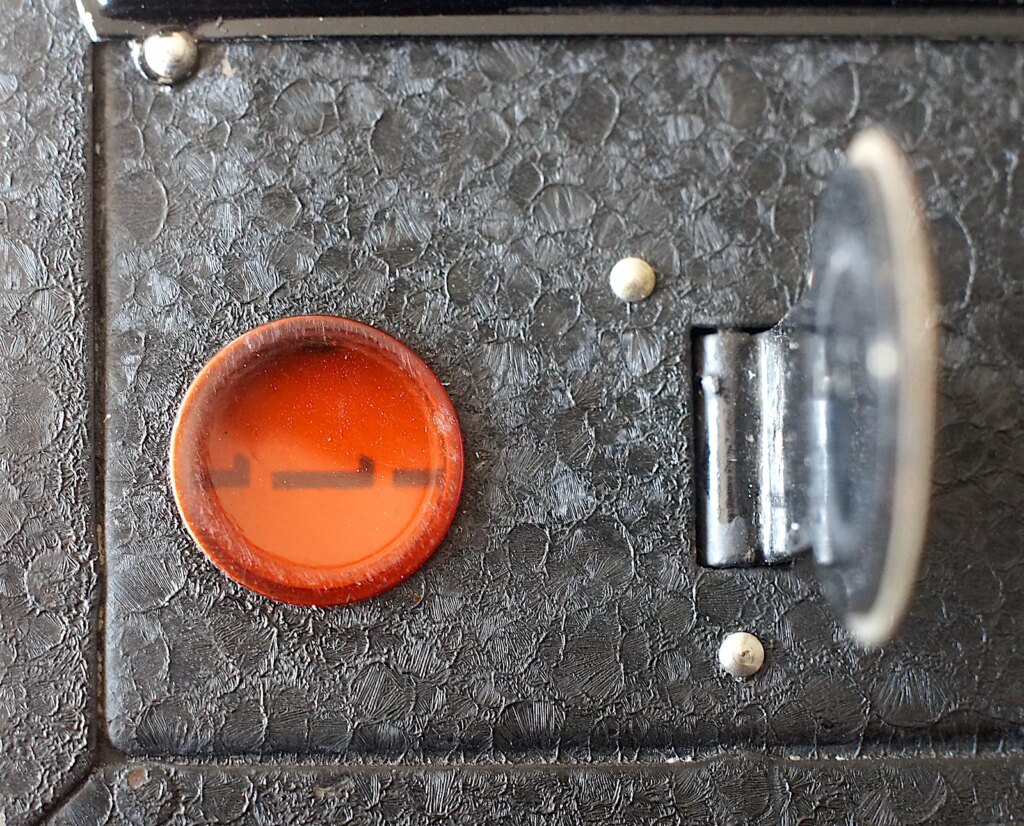
Two tripod sockets are provided but are rather shallow. I had to use a large washer to ensure a snug, wobble free fit on my tripod. Apart from that and the aforementioned fiddly aperture adjustment, handling was straightforward. A big plus was winding on, when I found that I could see the film markings more easily than usual. The thin, metal body and, presumably, the retracting pressure plate, brought the backing paper closer to the ruby window, making it so much easier to see the markings, especially with FP4+.
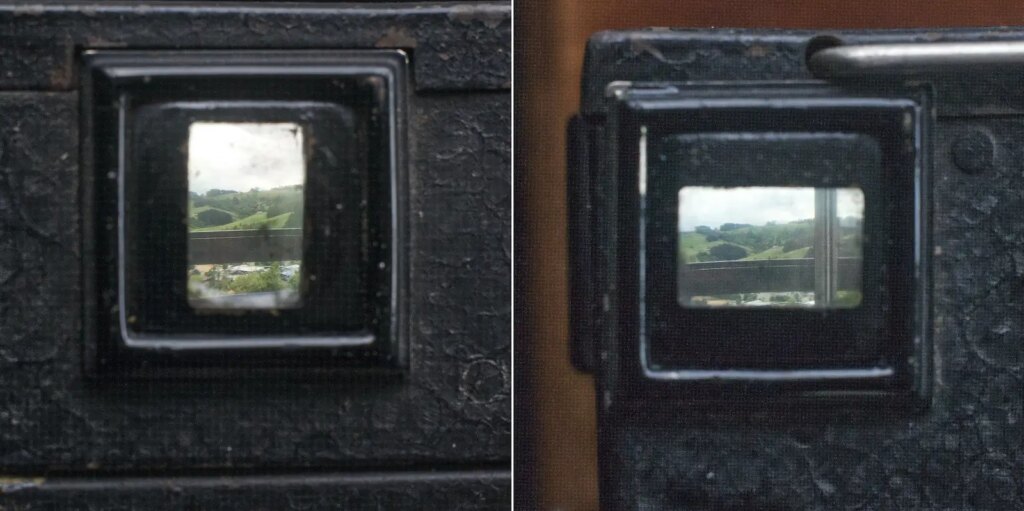
The small viewfinders are really tiny but very bright. They are reflex finders of course so the image is reversed left to right and use a condenser lens as a screen to maximise brightness. They are practical, however, but do require a lot of concentration.
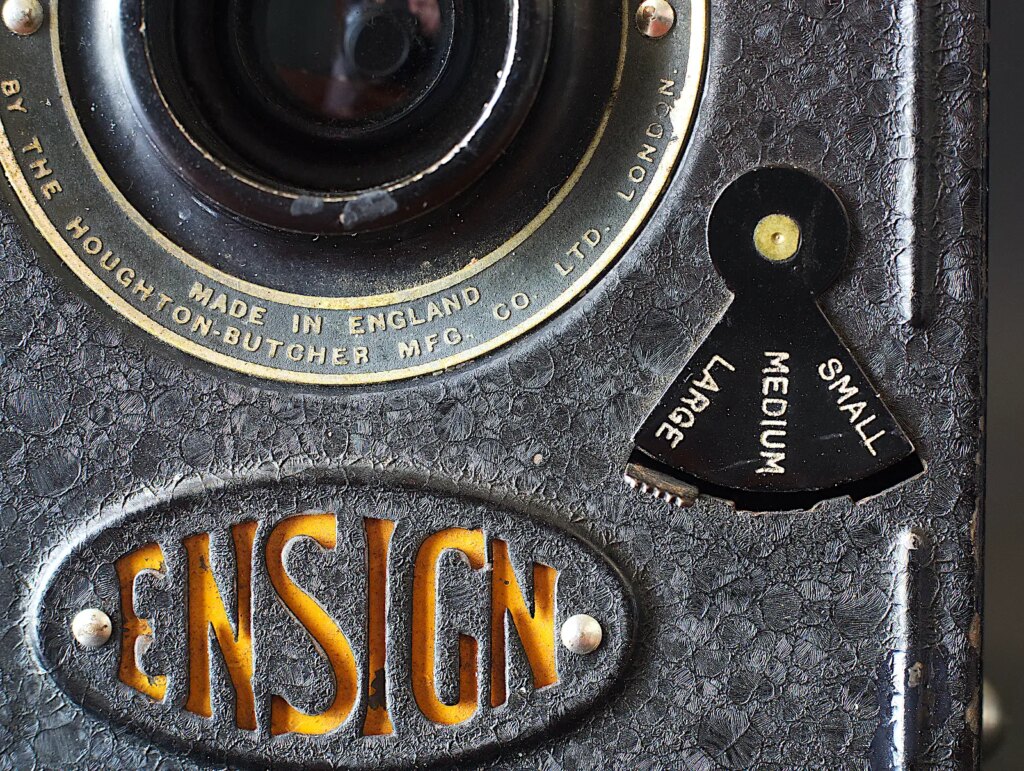
The three apertures available are approximately f16, f22, and f32, marked “Large”, “Medium” and “Small” respectively. Most consumer film speeds in 1927 would be ISO 25-30 equivalent and the shutter speed would be around 1/25 on “I”. According to the original instructions (thanks to www.orphancameras.org web site) ”Large” is the usual choice for subjects in full sun, therefore matching “Sunny 16” nicely, “Medium” for brightly lit scenes, such as beach/snow scenes, when closing down one stop was always recommended, and “Small”, only for subjects like interiors using the longer “Time” setting and a sturdy support.
FP4+ has a film speed just over two stops faster than the film originally available for the camera, so with this film, the “Small” setting would roughly equate to sunny, “Medium” to cloudy bright and “Large” to cloudy. With filters, the settings would equate to 1x, 2x and 4x factors in sunny conditions.
Now, with luck, the Ensign should produce some images. Well, yes and no.
Results.
Some results were good, very good in some cases, but quite unpredictable which rather spoiled the enjoyment. So, four films later I came to the conclusion that, interesting though this camera is, it will sadly be consigned to display.
The two main problems were light leaks and focus/sharpness.
The light leaks were eventually dealt with to an acceptable level, though not completely eliminated. The culprit seemed to be the hinge connecting the back to the main body which had lost its light trapping.
Focus was not repairable, the lens being just a basic meniscus but with inconsistent focus for some reason. Camera shake could be blamed in some cases but, even though I did get some good results, it was pot luck as to what was sharp.
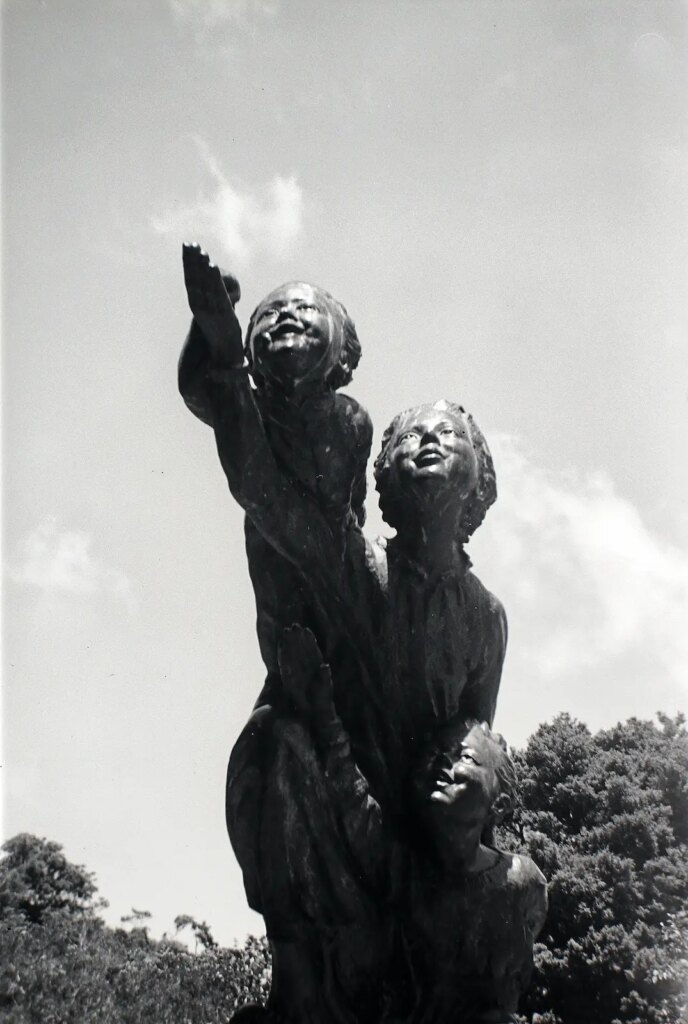
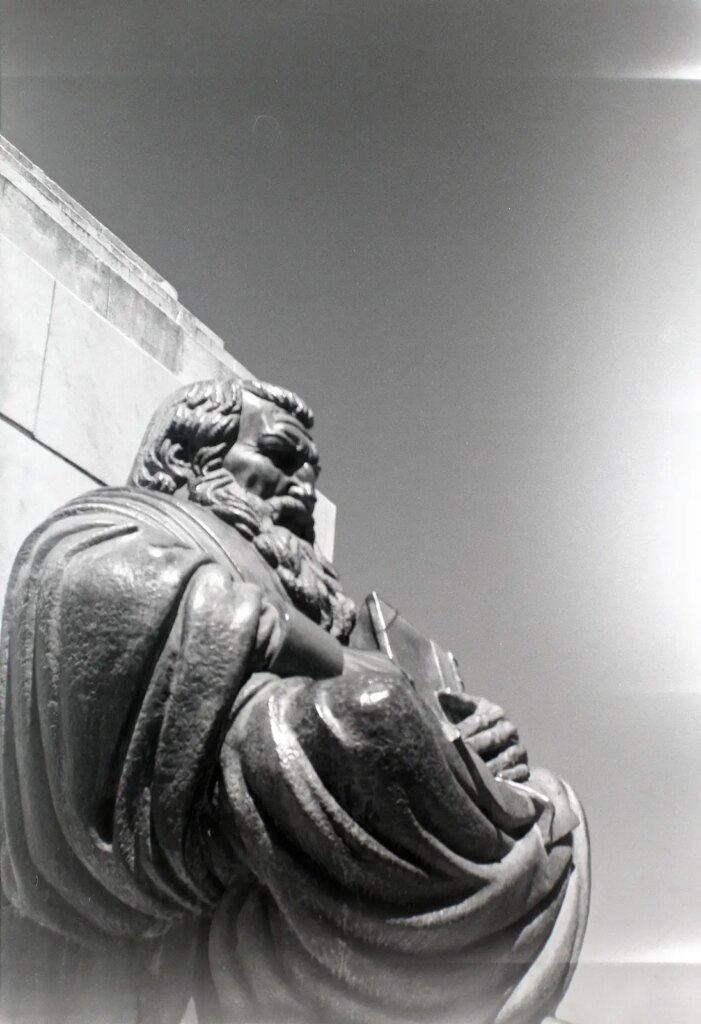
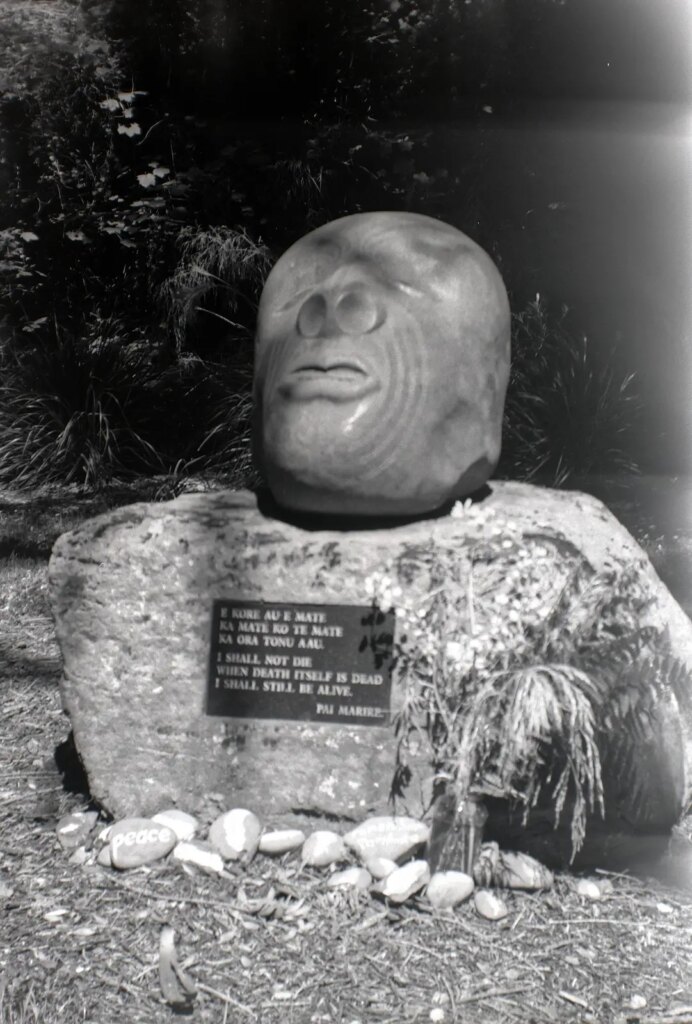
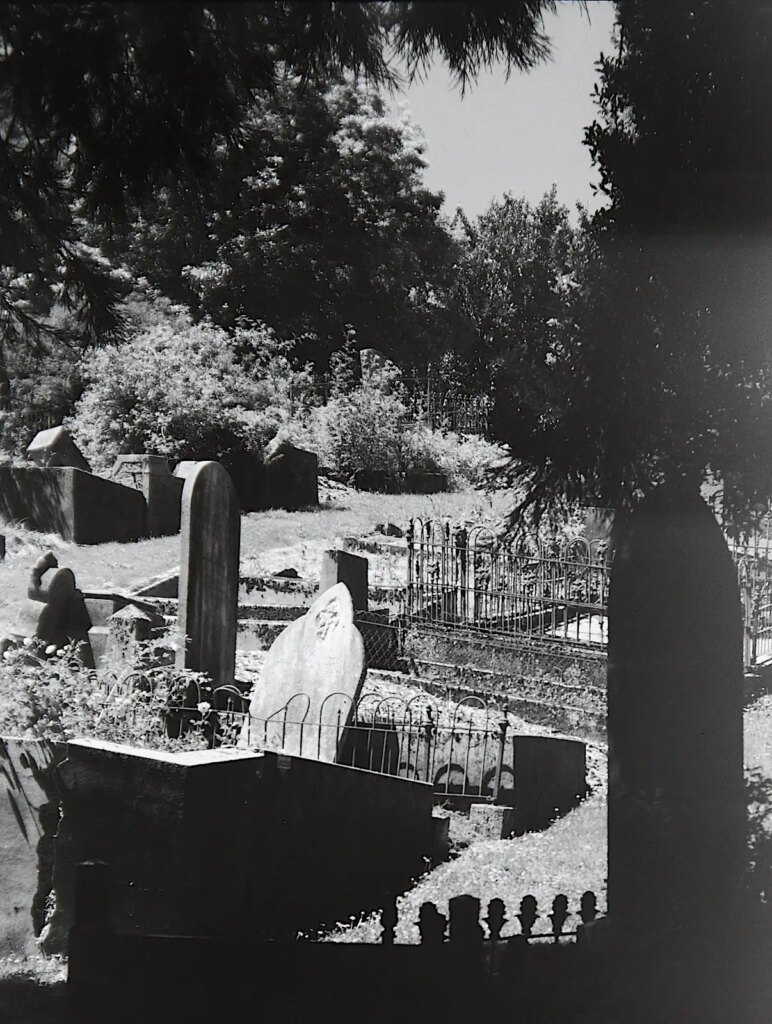
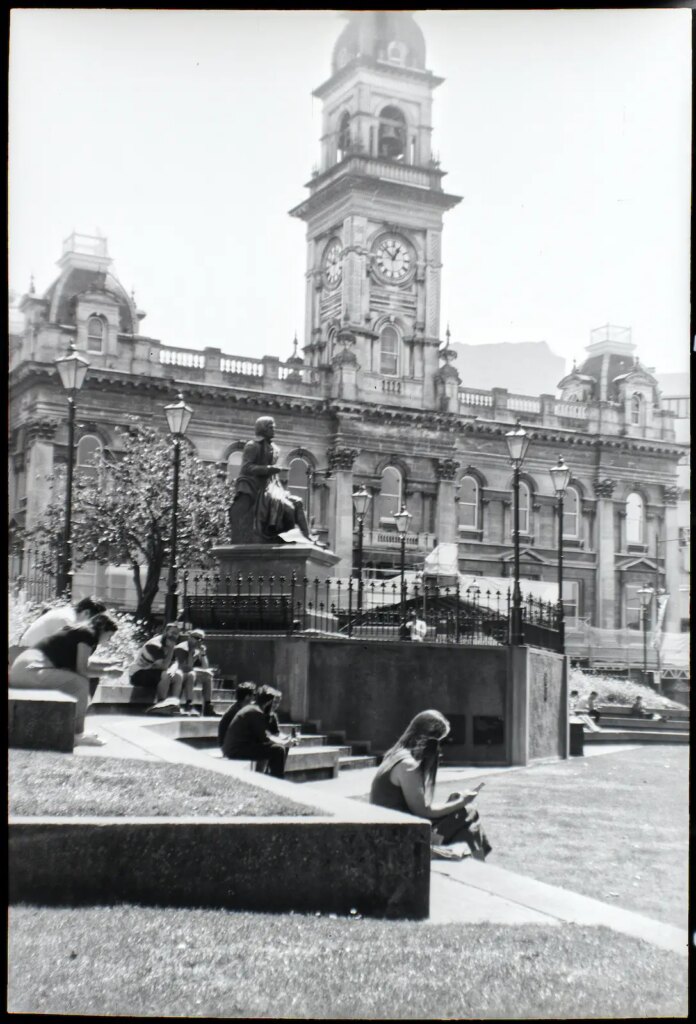
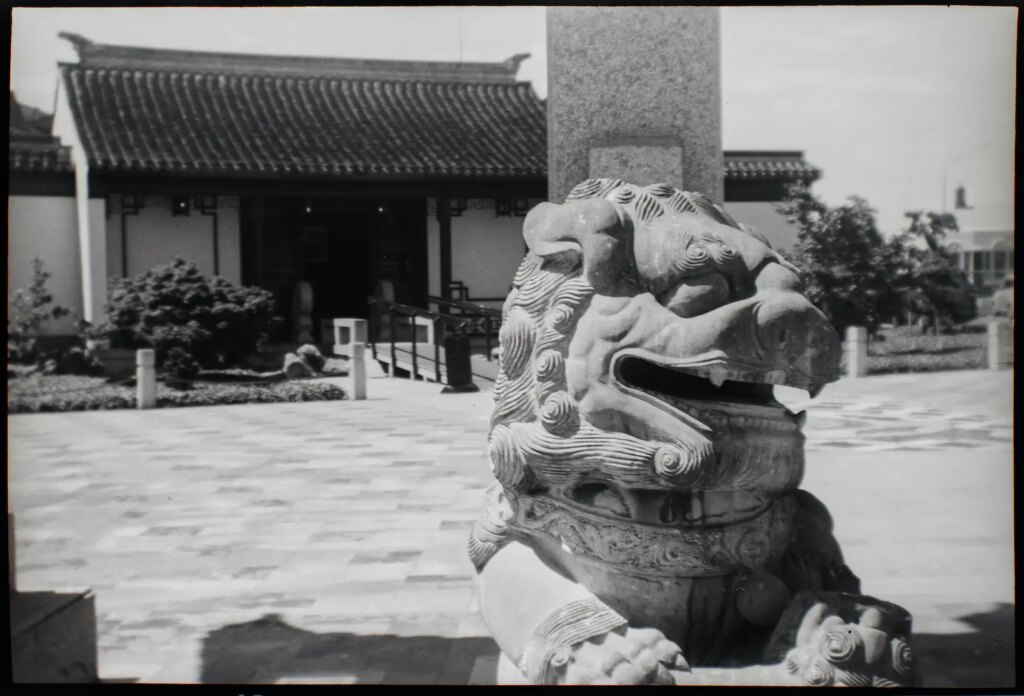
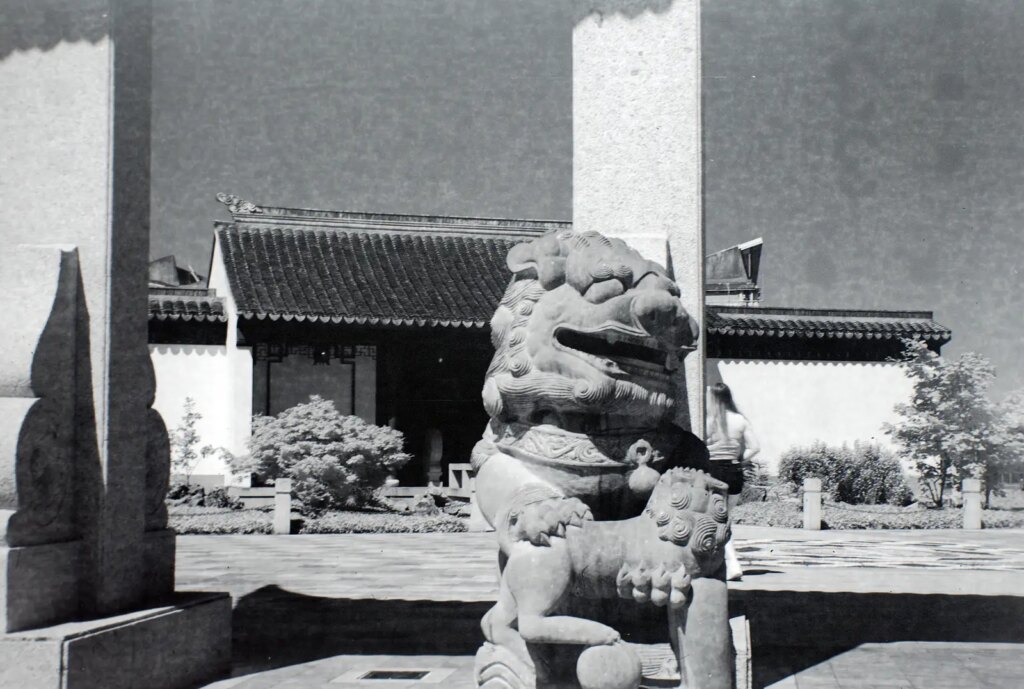
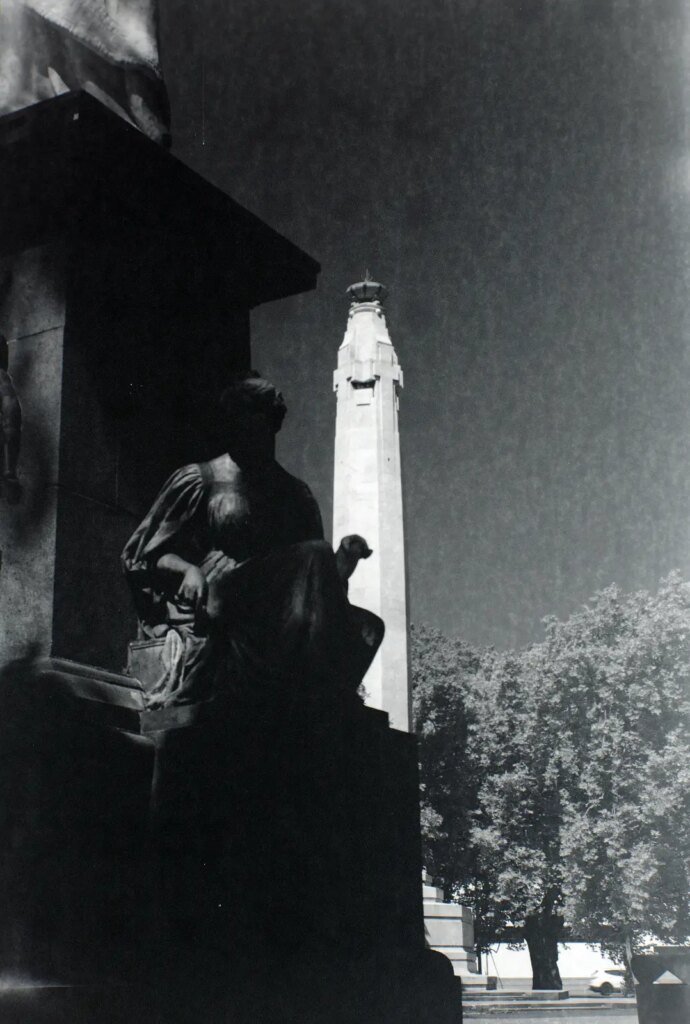
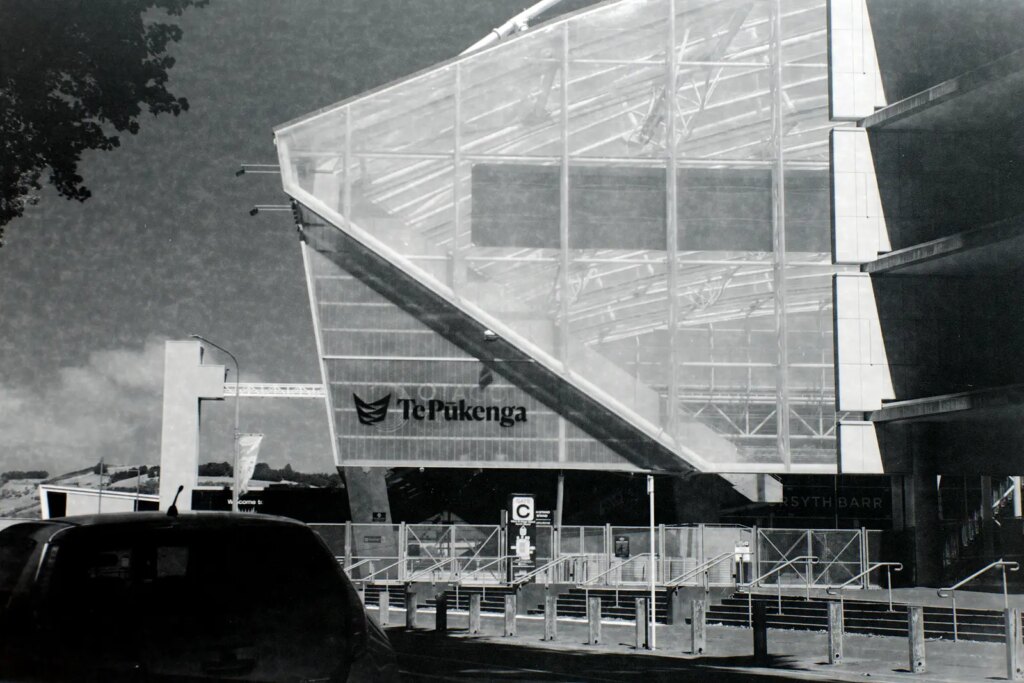
The examples were made on FP4+ and on Rollei Pan ISO 25 and Superpan 200, both outdated. The Superpan had some other fault, adding a random pattern over everything. I might try a fresh roll sometime in a more modern camera.
Finally.
I did wonder whether my light leaks had a story to tell. Perhaps, when it was manufactured in 1927, the original quality control had been a little lax and the light seals were not accurately applied, or, maybe, the problem simply could not be resolved. Whatever the case, I can see this being the root of the company’s problems leading to the model’s early replacement. Such an innovative design must have needed quite a bit of R & D investment so being replaced after only two years is a significant decision.
Interestingly, its replacement in 1930, the “Alldistance 20”, had an almost identical specification but, significantly, abandon the hinged back. The new camera used the slide together, two box design used by just about every other contemporary manufacturer of box cameras, removing the troublesome hinge and all the light traps needed. It was also almost half the price, 13/6d compared to 25/-, reflecting the cost of the earlier features.
So maybe I am not alone in having been plagued by light leakage resulting from a basically flawed design.

In its day, however, a good example would have produced the snapshots of life its owner would have wanted, without much technical knowledge, serving much the same purpose as the phone camera does for so many people today.
(Images of the camera and digitised copies of negatives are produced with a Sony A3000 with an AI’d 55mm Micro Nikkor and adapters processed in Affinity Photo.)
Share this post:
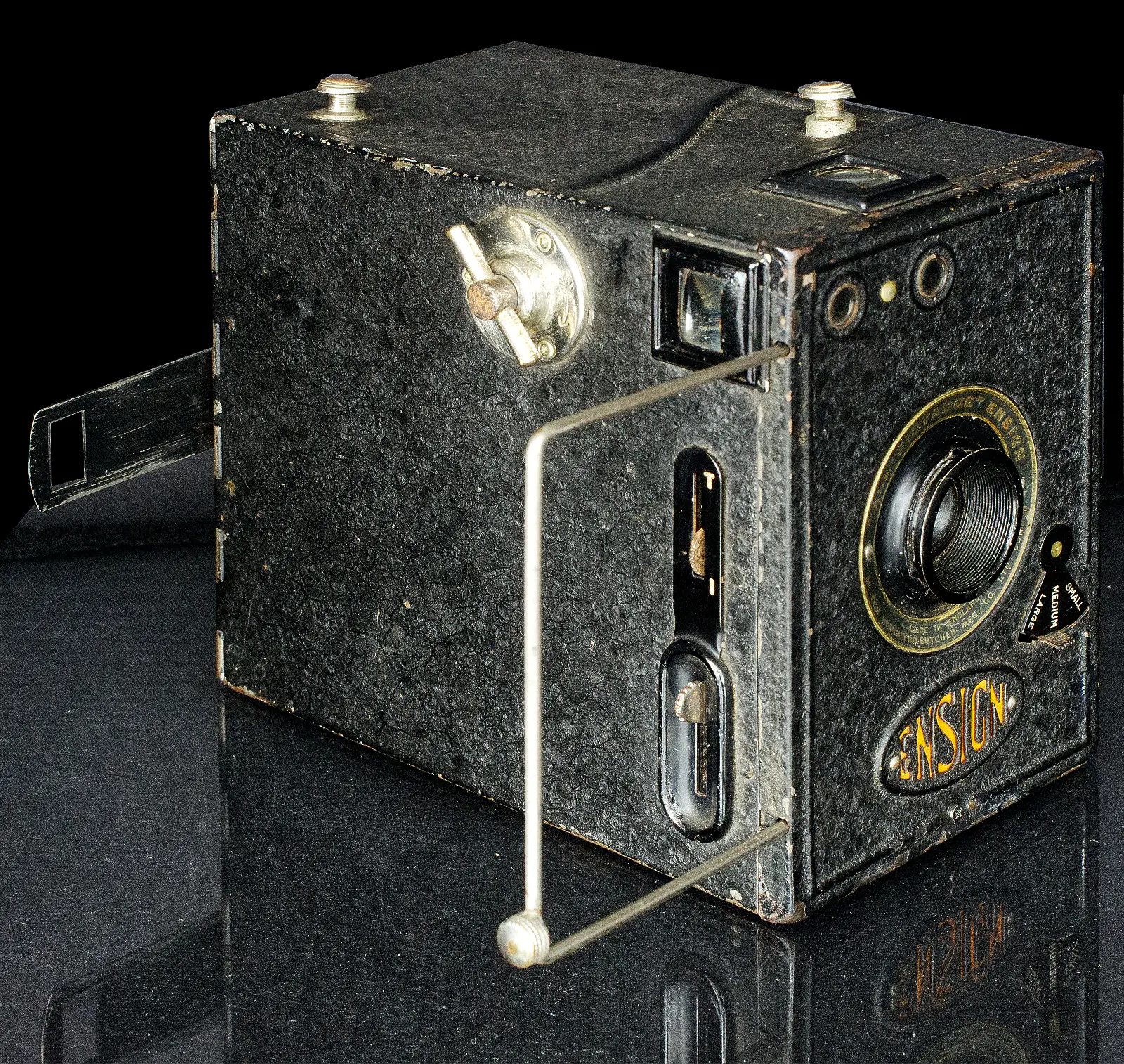








Comments
Bob Janes on Ensign All Distance – A Box Camera from 1927 – By Tony Warren
Comment posted: 03/03/2023
I know you said you put 4 films through, but the quality of what you have shown here is quite impressive. I'd be tempted to try a roll with the seams covered on the outside of the camera by insulating tape to kill off the light leaks (something I also did with some of the Minolta 16 stuff I was using as I didn't trust the light seals there to be good after all this time).
Thanks for an entertaining article - I quite like the look of the 'sports finder' (if you can have a sports finder on a camera with a 1/25 shutter speed).
Tony Warren on Ensign All Distance – A Box Camera from 1927 – By Tony Warren
Comment posted: 03/03/2023